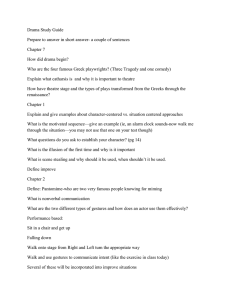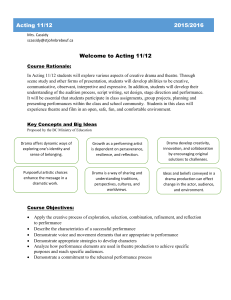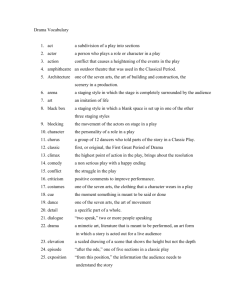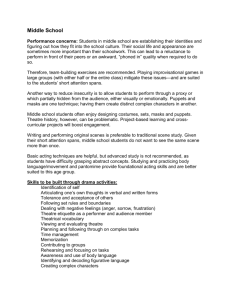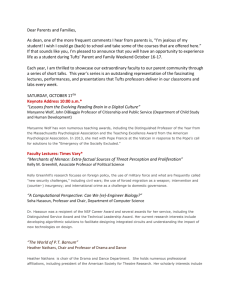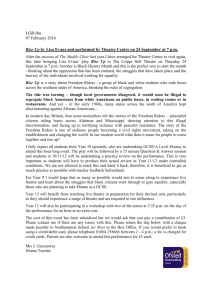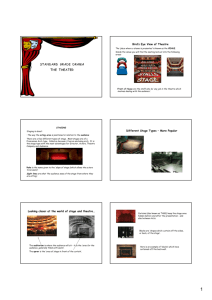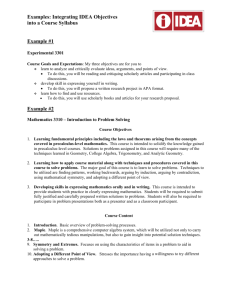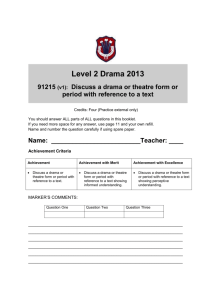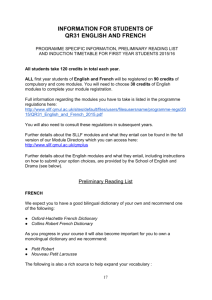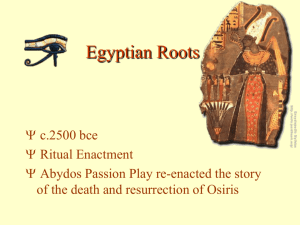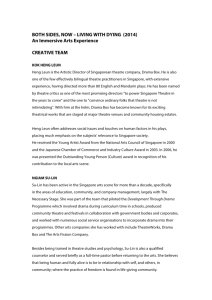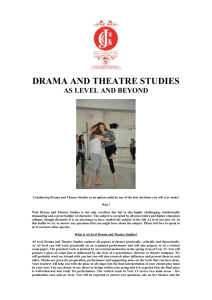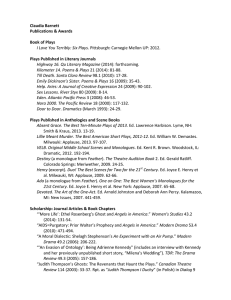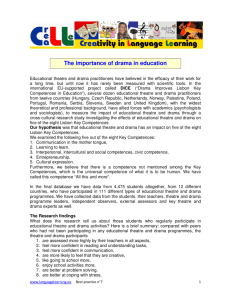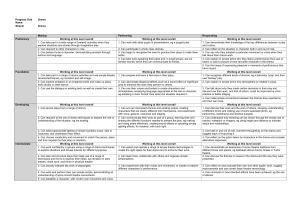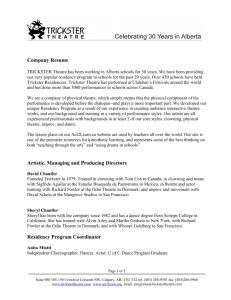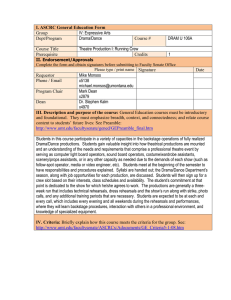M.G. Drama & Theatre(matrix)
advertisement
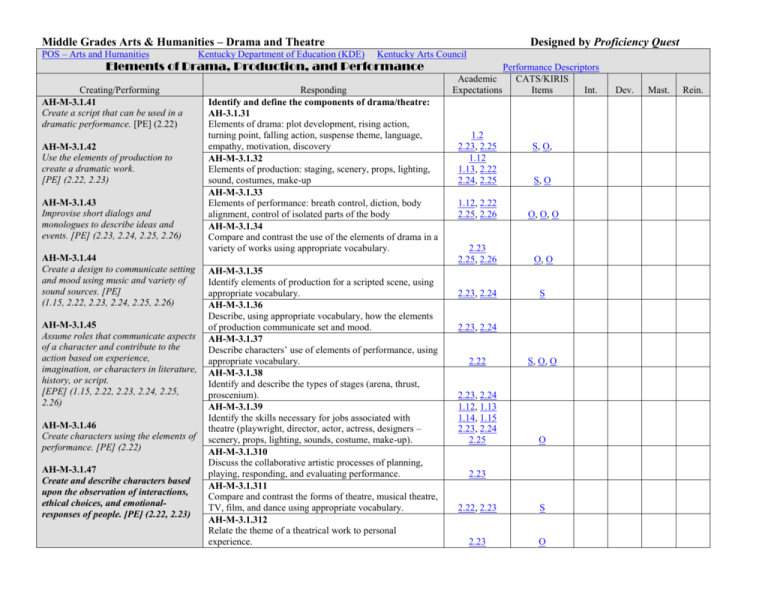
Middle Grades Arts & Humanities – Drama and Theatre POS – Arts and Humanities Kentucky Department of Education (KDE) Designed by Proficiency Quest Kentucky Arts Council Elements of Drama, Production, and Performance Creating/Performing AH-M-3.1.41 Create a script that can be used in a dramatic performance. [PE] (2.22) AH-M-3.1.42 Use the elements of production to create a dramatic work. [PE] (2.22, 2.23) AH-M-3.1.43 Improvise short dialogs and monologues to describe ideas and events. [PE] (2.23, 2.24, 2.25, 2.26) AH-M-3.1.44 Create a design to communicate setting and mood using music and variety of sound sources. [PE] (1.15, 2.22, 2.23, 2.24, 2.25, 2.26) AH-M-3.1.45 Assume roles that communicate aspects of a character and contribute to the action based on experience, imagination, or characters in literature, history, or script. [EPE] (1.15, 2.22, 2.23, 2.24, 2.25, 2.26) AH-M-3.1.46 Create characters using the elements of performance. [PE] (2.22) AH-M-3.1.47 Create and describe characters based upon the observation of interactions, ethical choices, and emotionalresponses of people. [PE] (2.22, 2.23) Responding Identify and define the components of drama/theatre: AH-3.1.31 Elements of drama: plot development, rising action, turning point, falling action, suspense theme, language, empathy, motivation, discovery AH-M-3.1.32 Elements of production: staging, scenery, props, lighting, sound, costumes, make-up AH-M-3.1.33 Elements of performance: breath control, diction, body alignment, control of isolated parts of the body AH-M-3.1.34 Compare and contrast the use of the elements of drama in a variety of works using appropriate vocabulary. AH-M-3.1.35 Identify elements of production for a scripted scene, using appropriate vocabulary. AH-M-3.1.36 Describe, using appropriate vocabulary, how the elements of production communicate set and mood. AH-M-3.1.37 Describe characters’ use of elements of performance, using appropriate vocabulary. AH-M-3.1.38 Identify and describe the types of stages (arena, thrust, proscenium). AH-M-3.1.39 Identify the skills necessary for jobs associated with theatre (playwright, director, actor, actress, designers – scenery, props, lighting, sounds, costume, make-up). AH-M-3.1.310 Discuss the collaborative artistic processes of planning, playing, responding, and evaluating performance. AH-M-3.1.311 Compare and contrast the forms of theatre, musical theatre, TV, film, and dance using appropriate vocabulary. AH-M-3.1.312 Relate the theme of a theatrical work to personal experience. Academic Expectations 1.2 2.23, 2.25 1.12 1.13, 2.22 2.24, 2.25 Performance Descriptors CATS/KIRIS Items Int. S, O, S, O 1.12, 2.22 2.25, 2.26 O, O, O 2.23 2.25, 2.26 O, O 2.23, 2.24 S 2.23, 2.24 2.22 S, O, O 2.23, 2.24 1.12, 1.13 1.14, 1.15 2.23, 2.24 2.25 O 2.23 2.22, 2.23 S 2.23 O Dev. Mast. Rein. Middle Grades Arts & Humanities – Drama and Theatre Designed by Proficiency Quest Historical and cultural Context Creating/Performing Responding AH-M-3.2.31 Identify the characteristics of theatrical works from different cultures, periods, and styles (Greek, Elizabethan, Modern). AH-M-3.2.32 Discuss how diverse cultures, periods, and styles affect drama. Academic Expectations CATS/KIRIS Items 2.23, 2.24 2.25, 2.26 2.23 2.25, 2.26 S Int. Dev. Mast. Rein.


